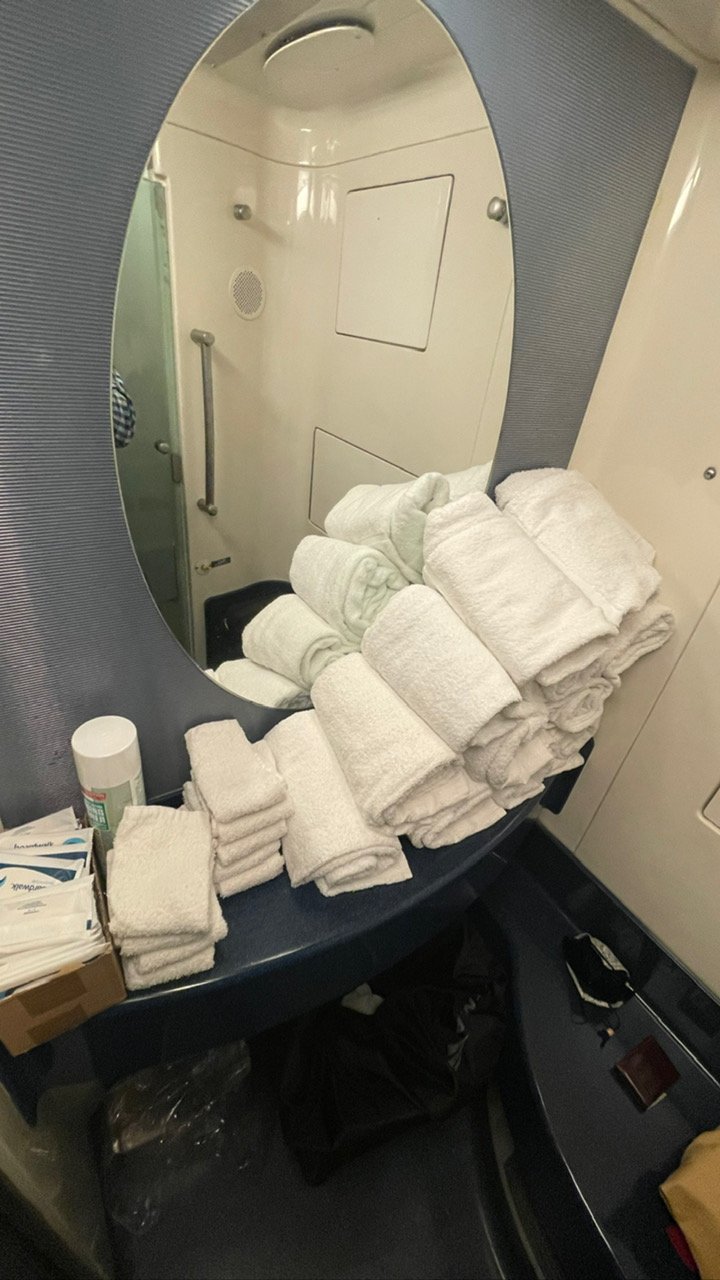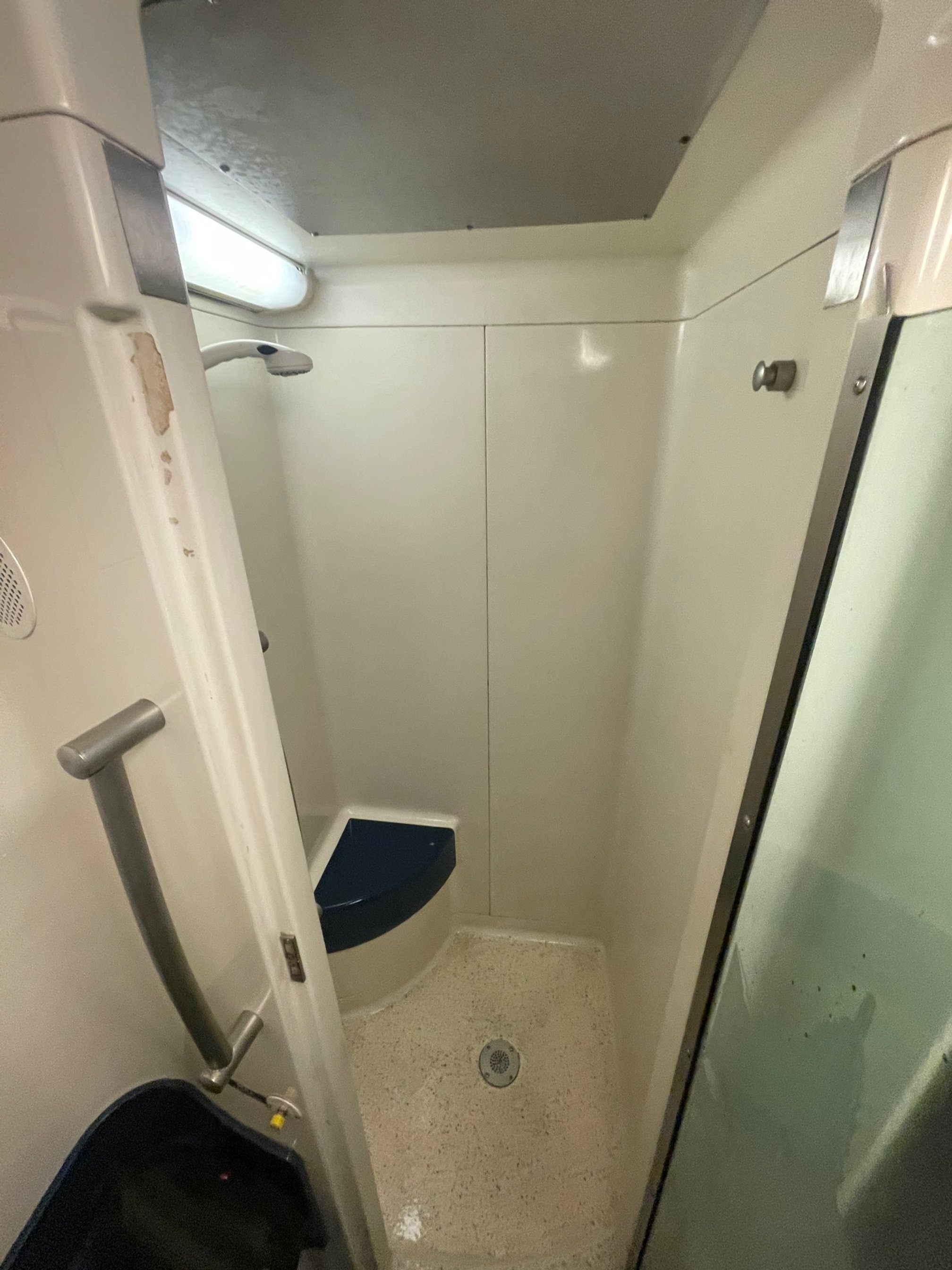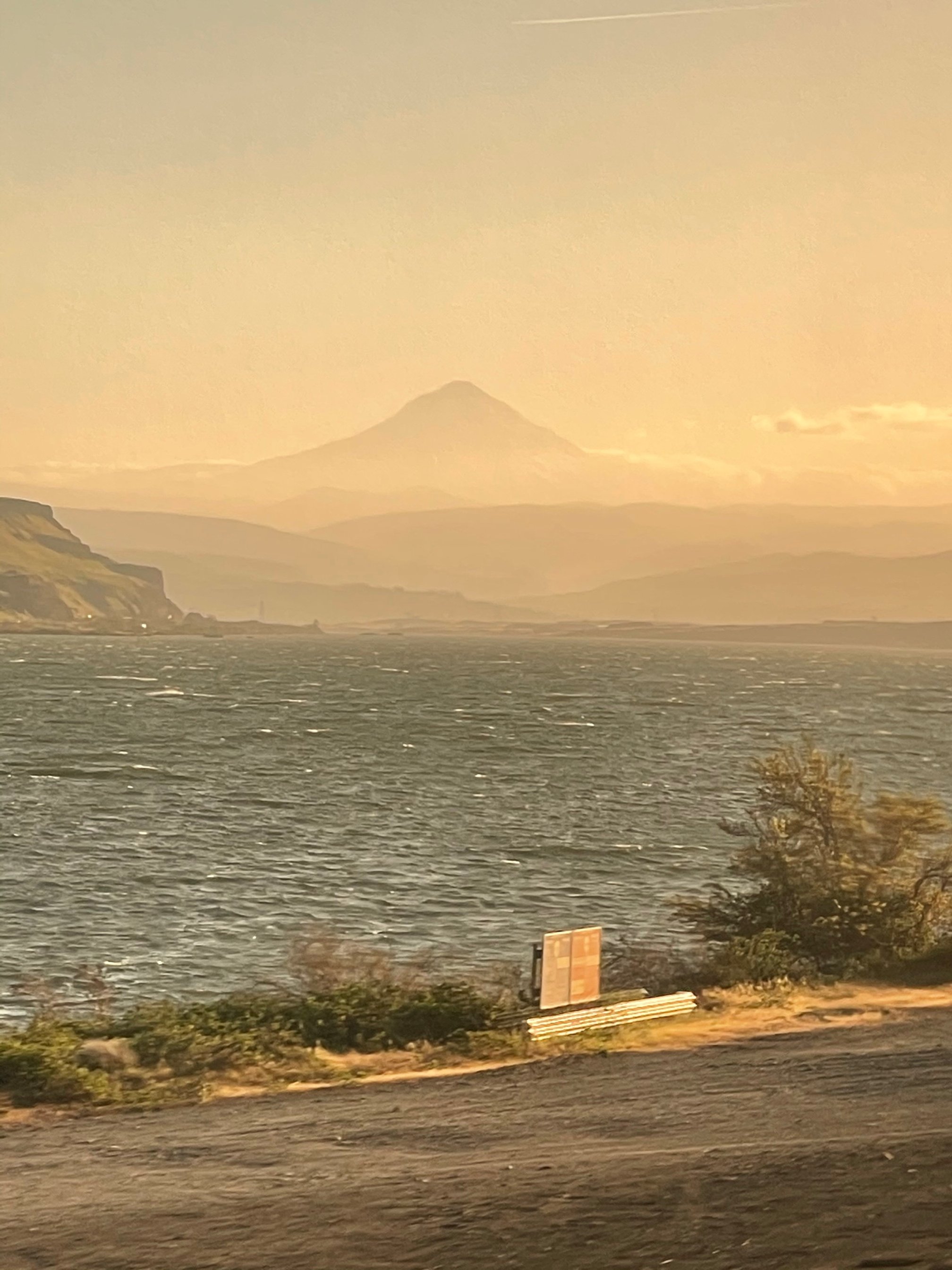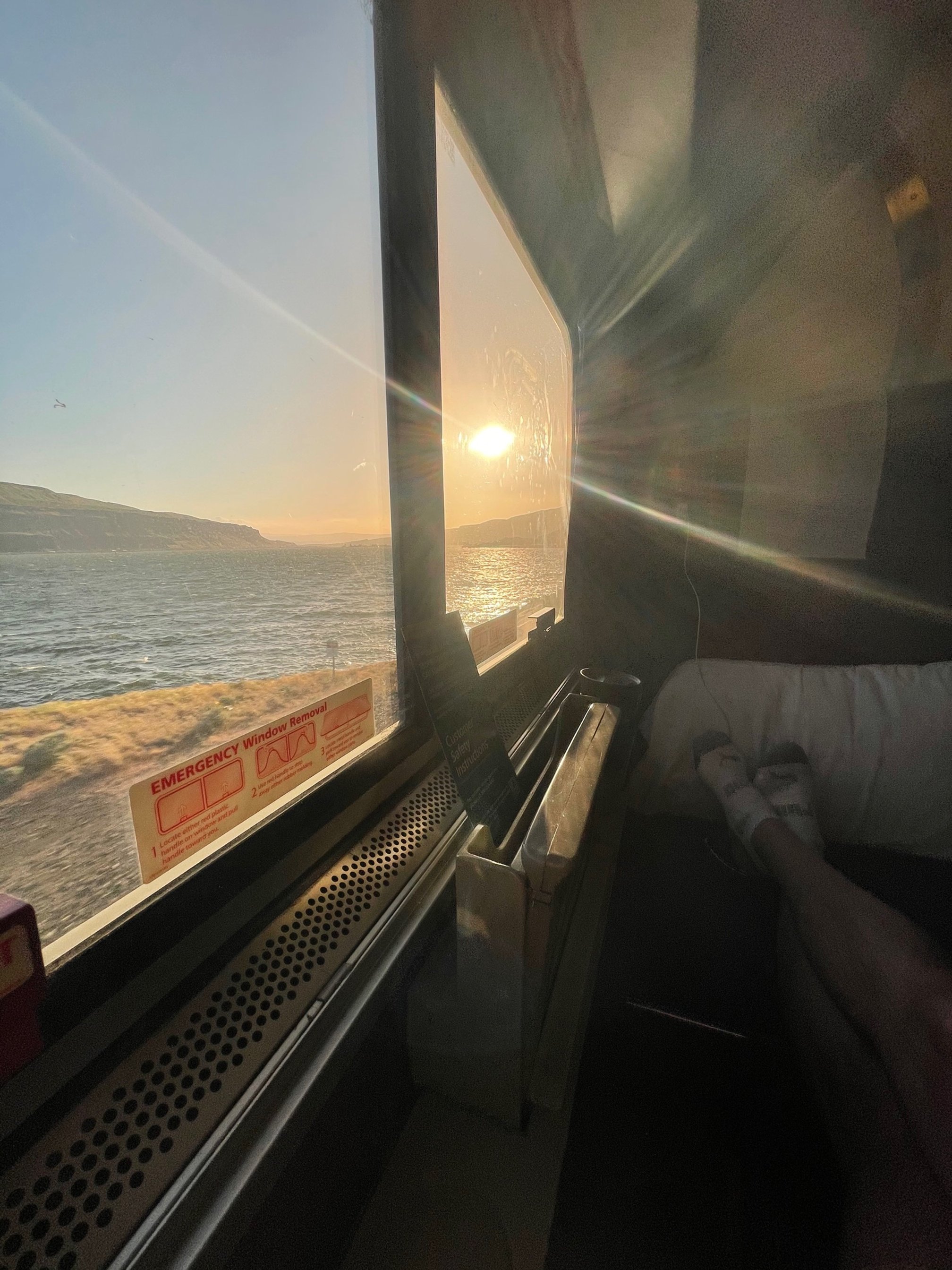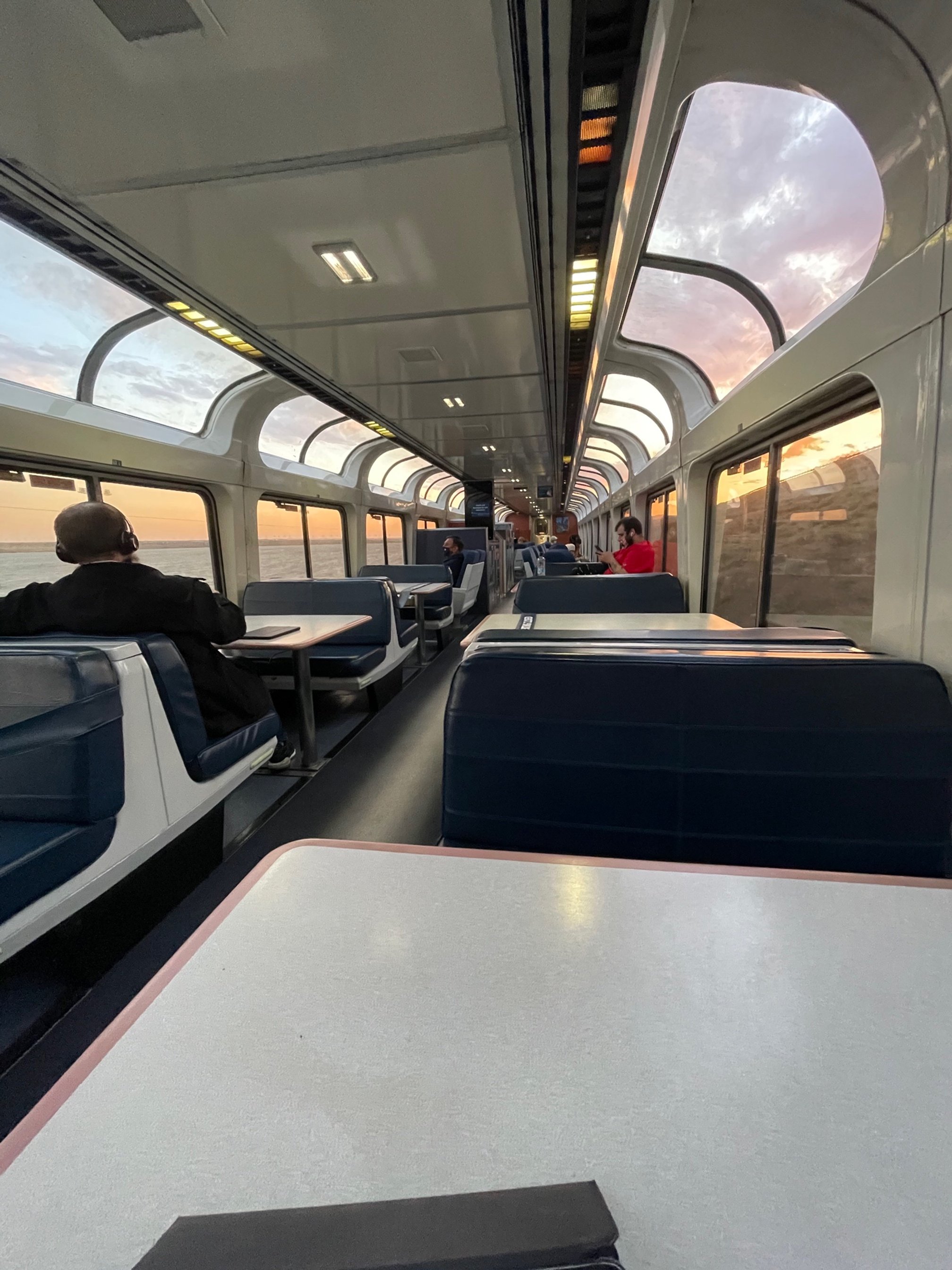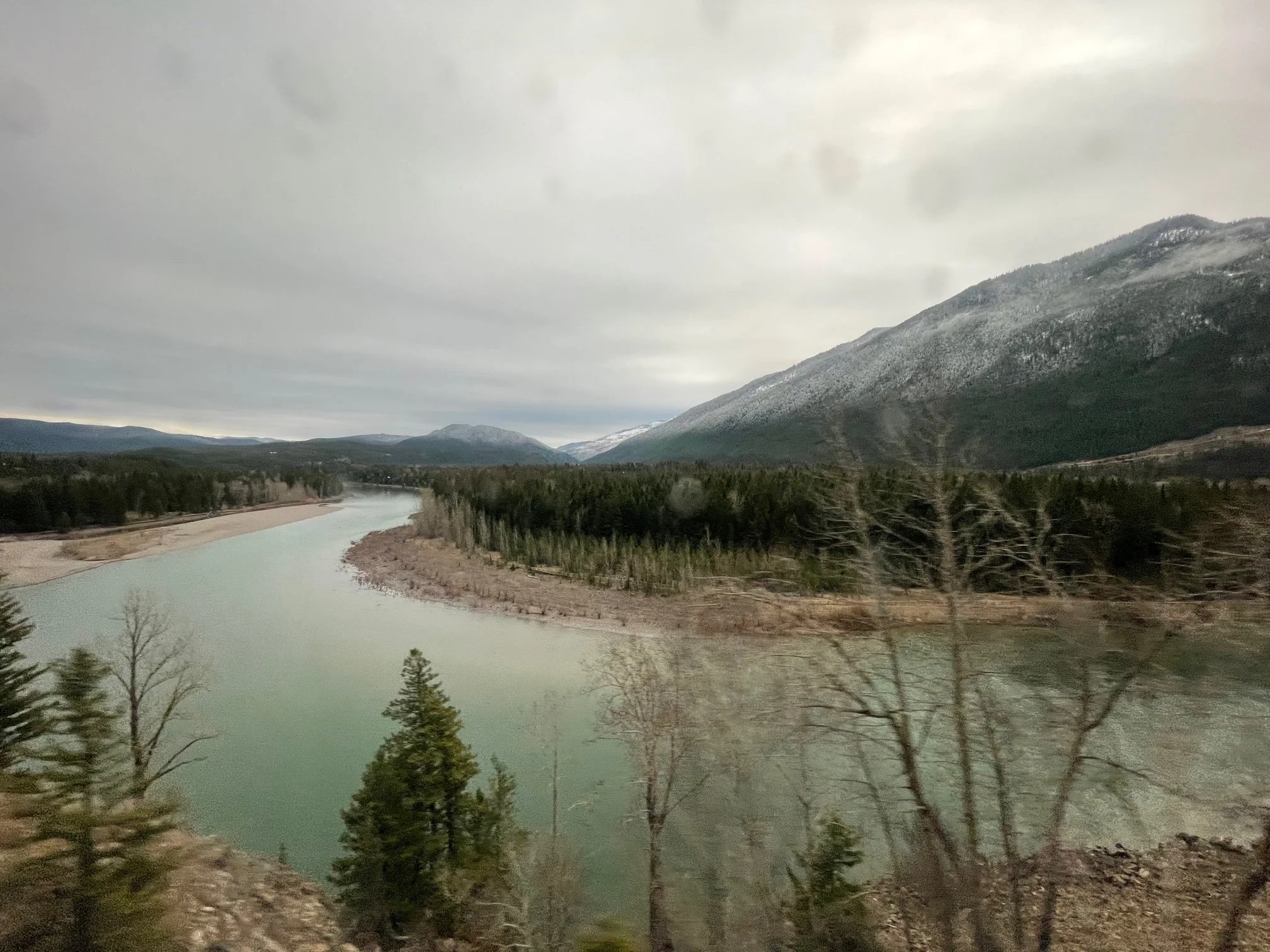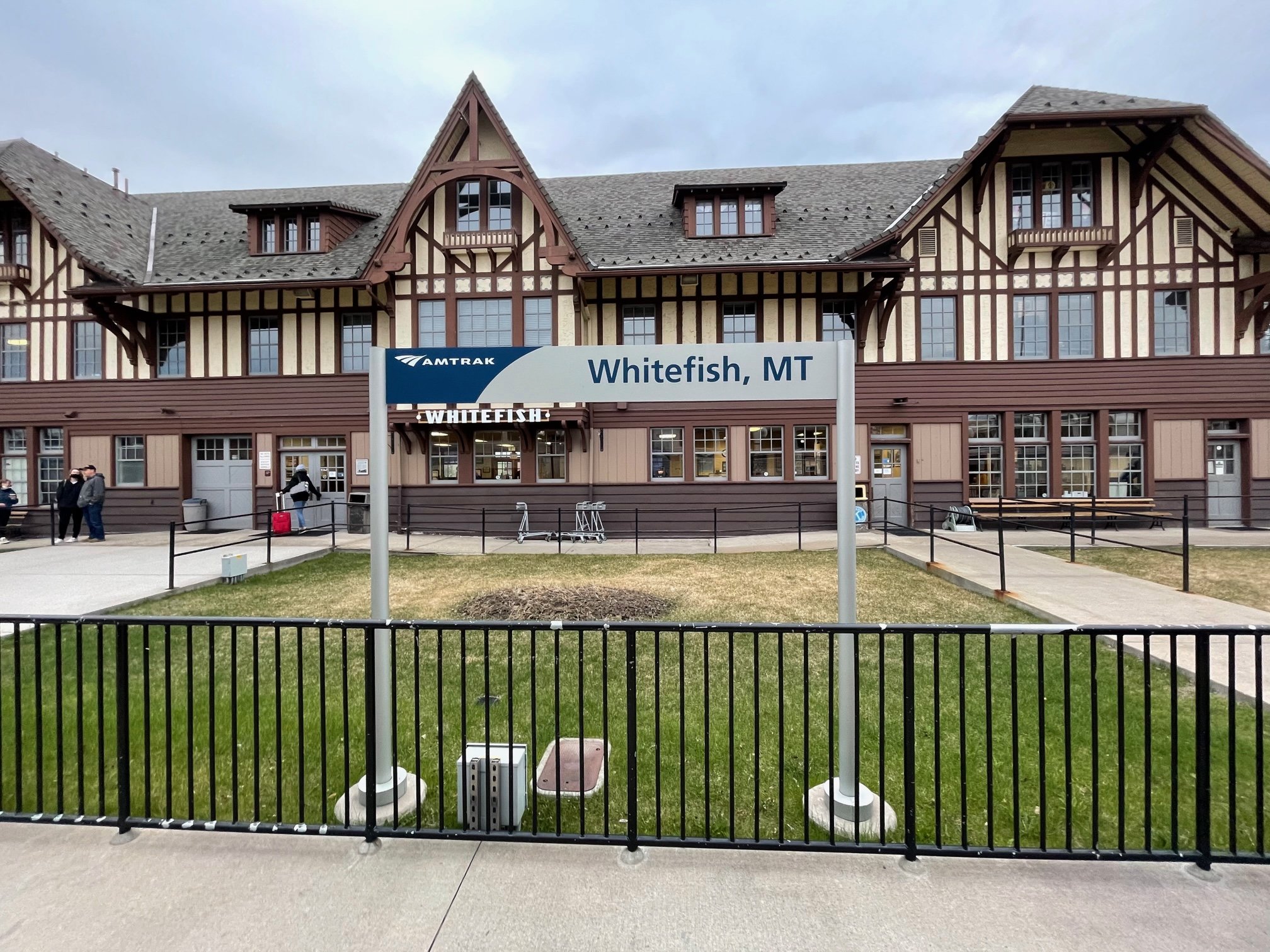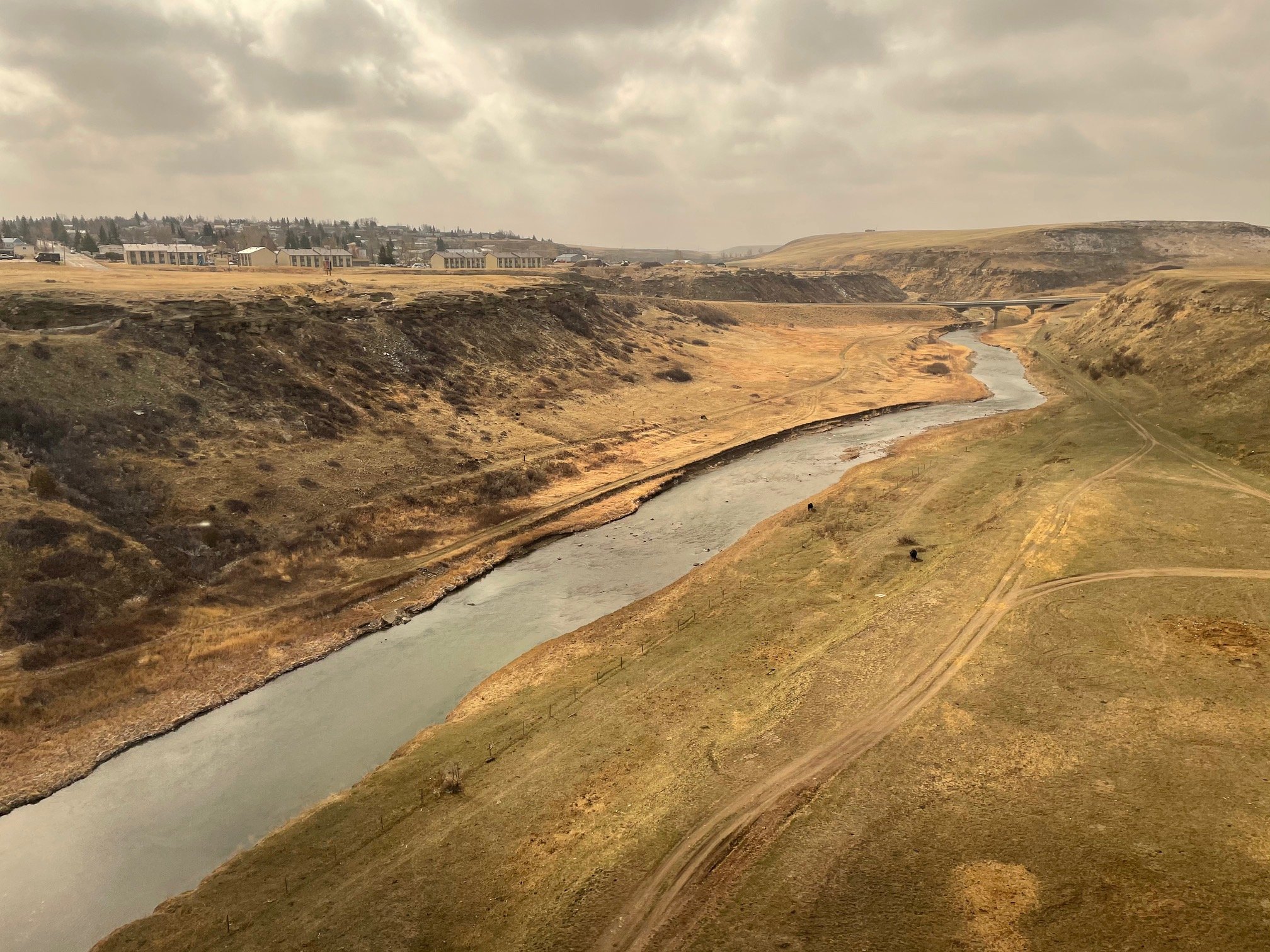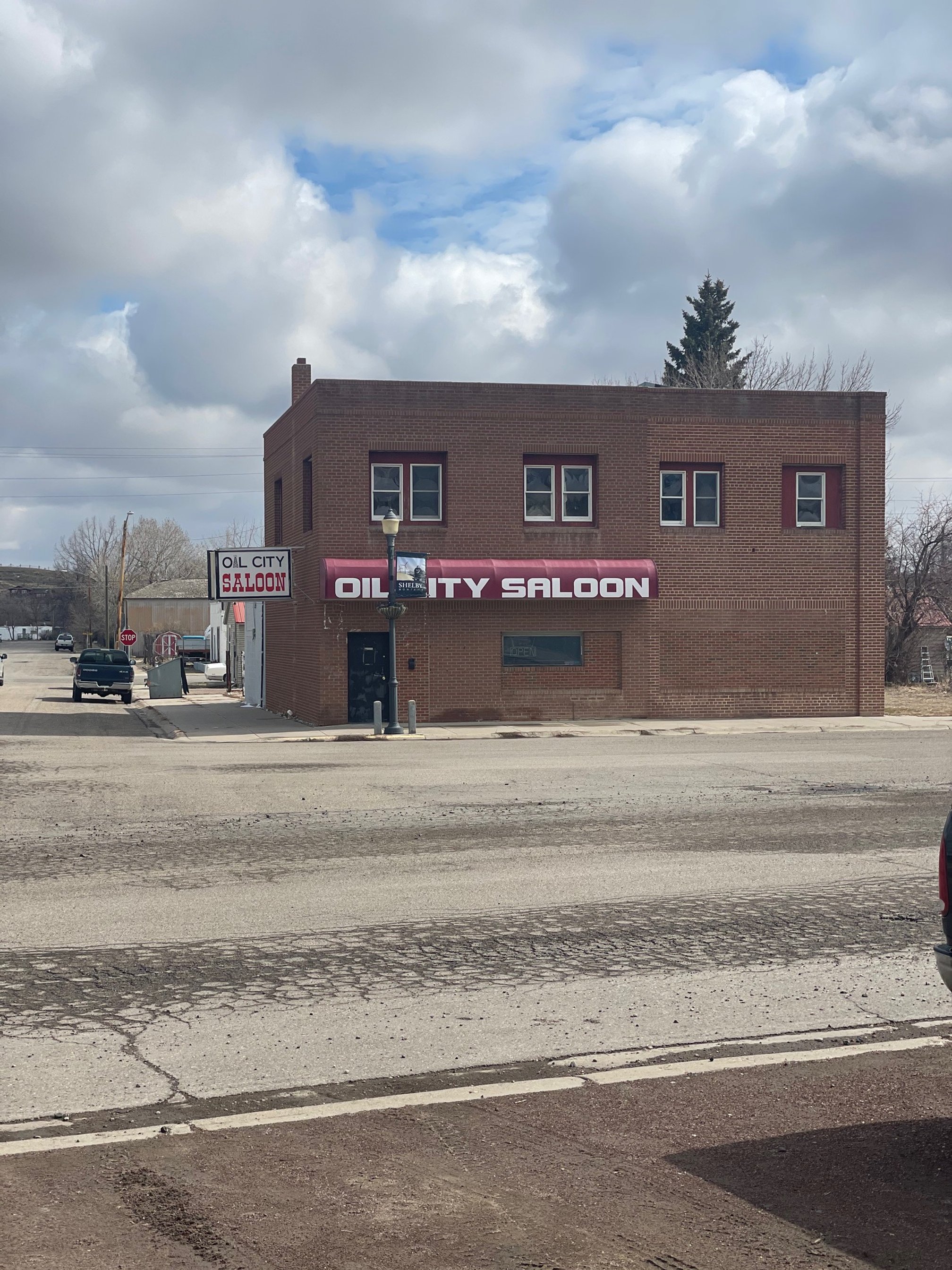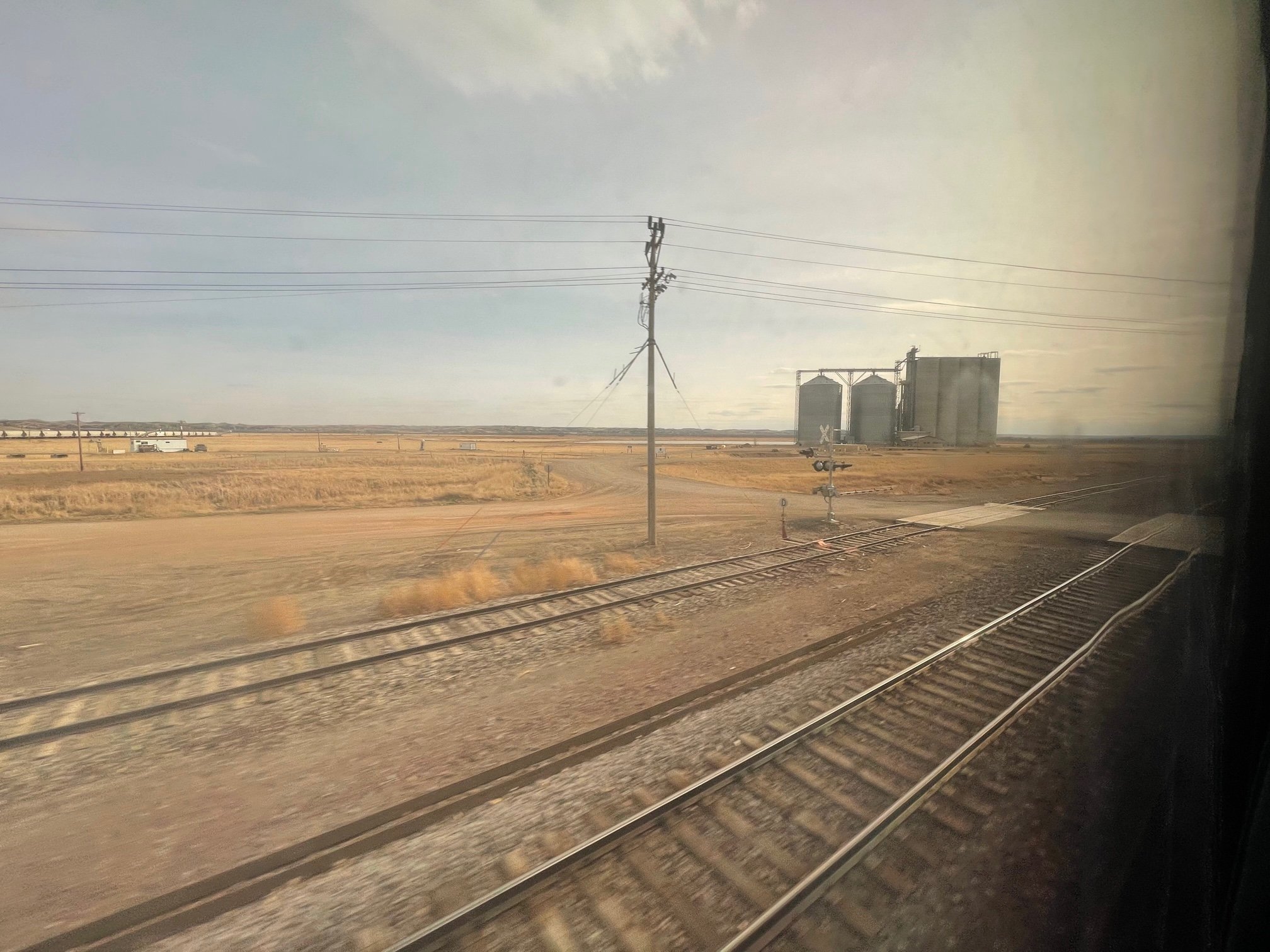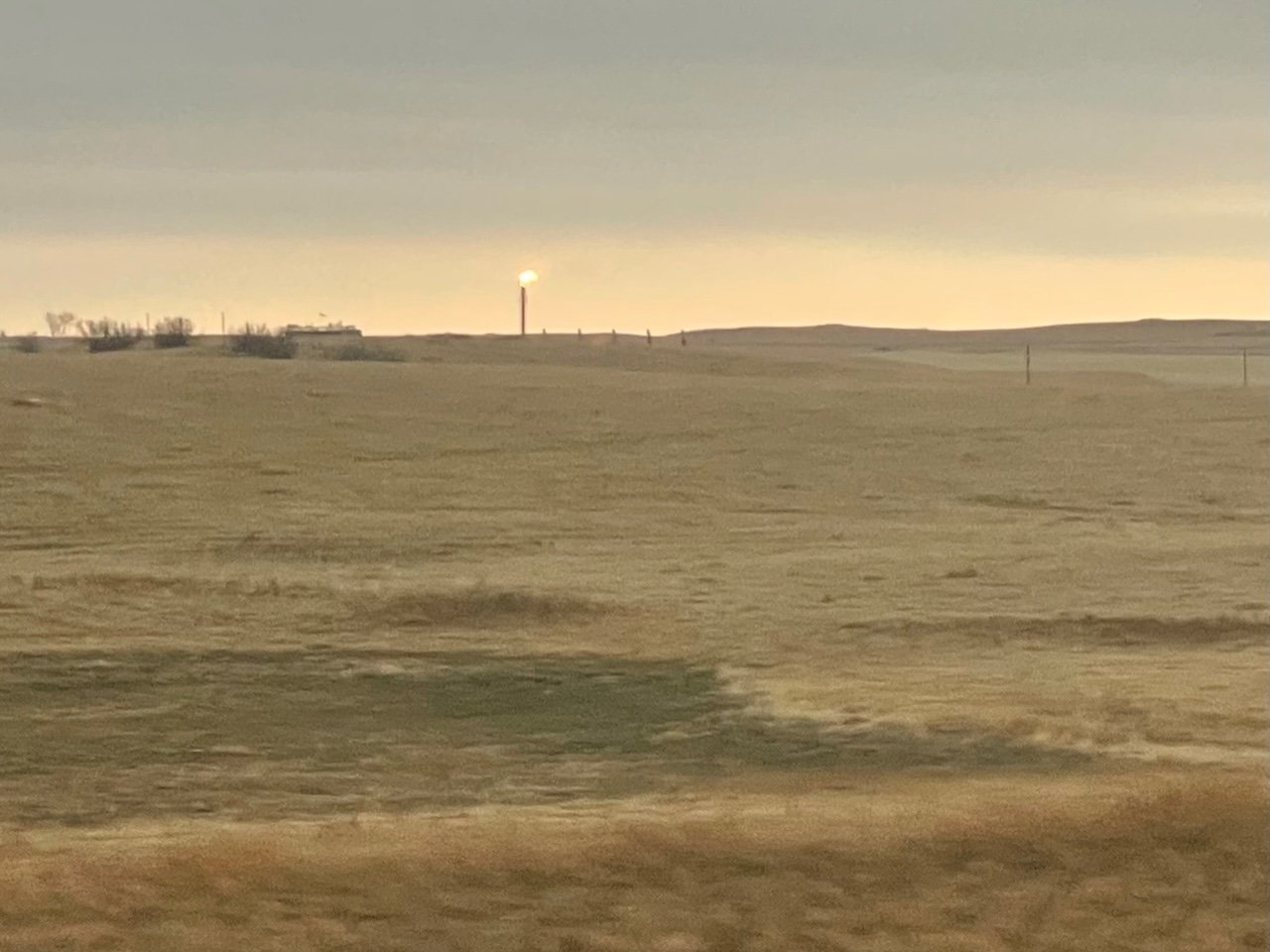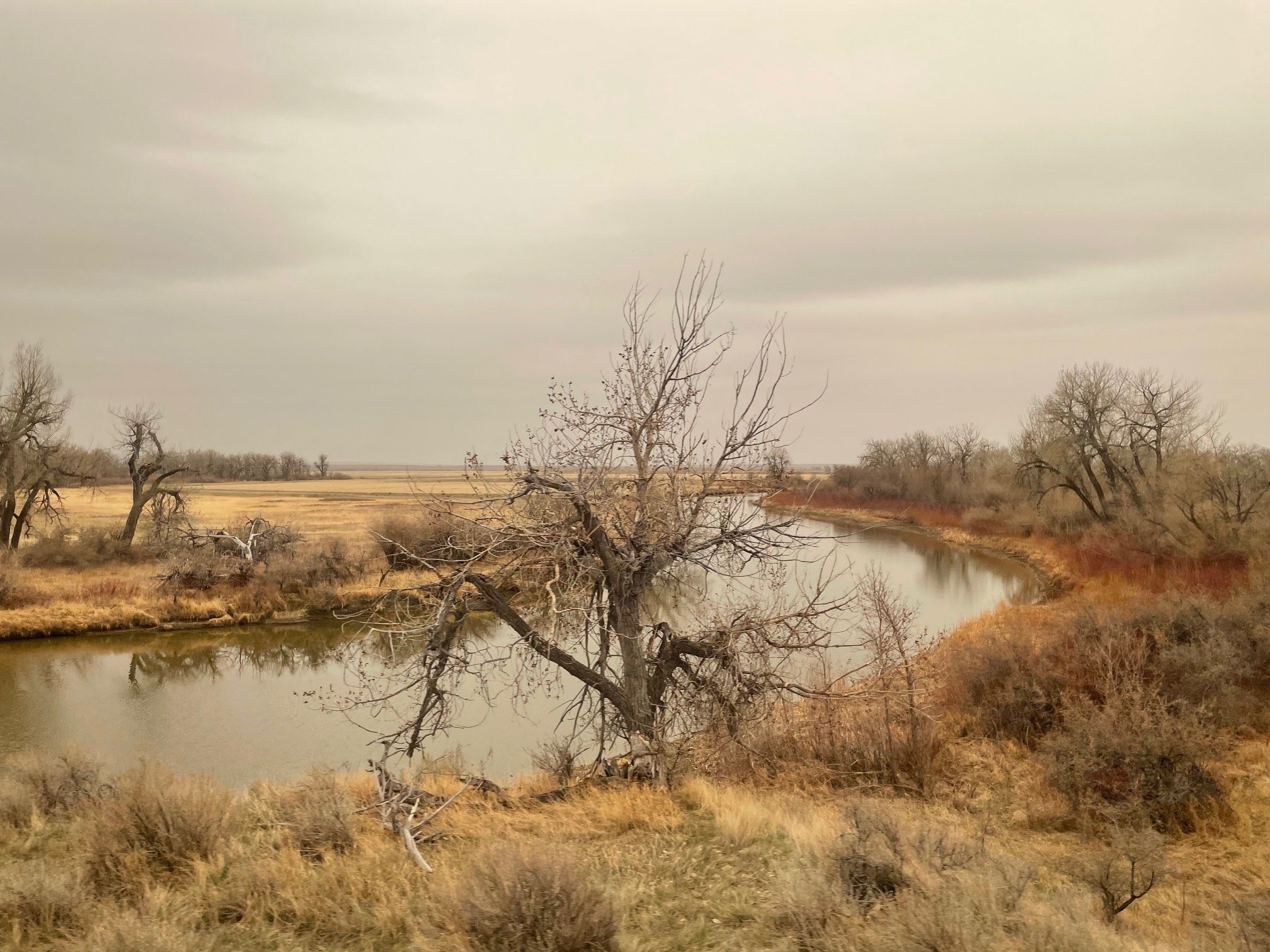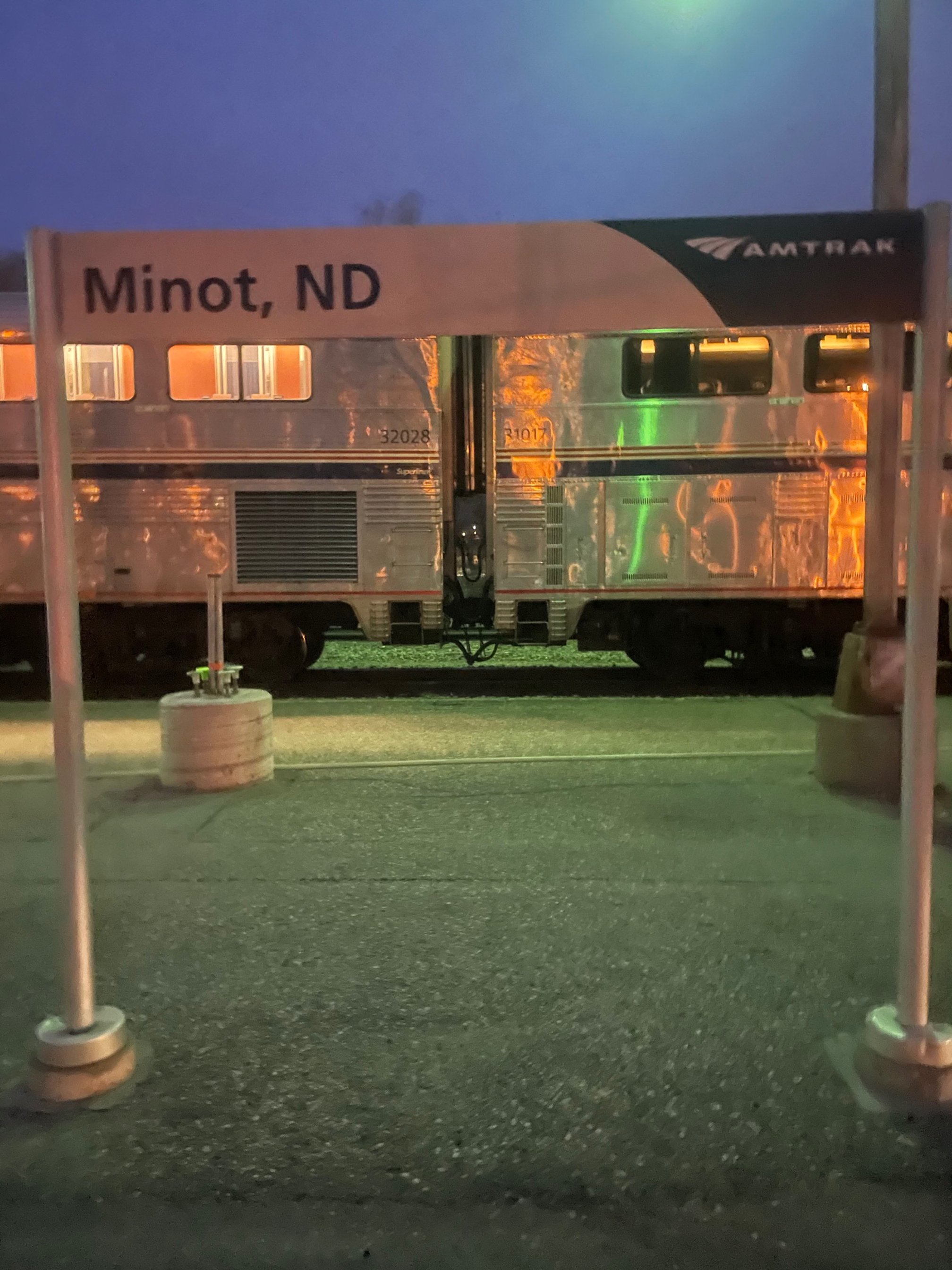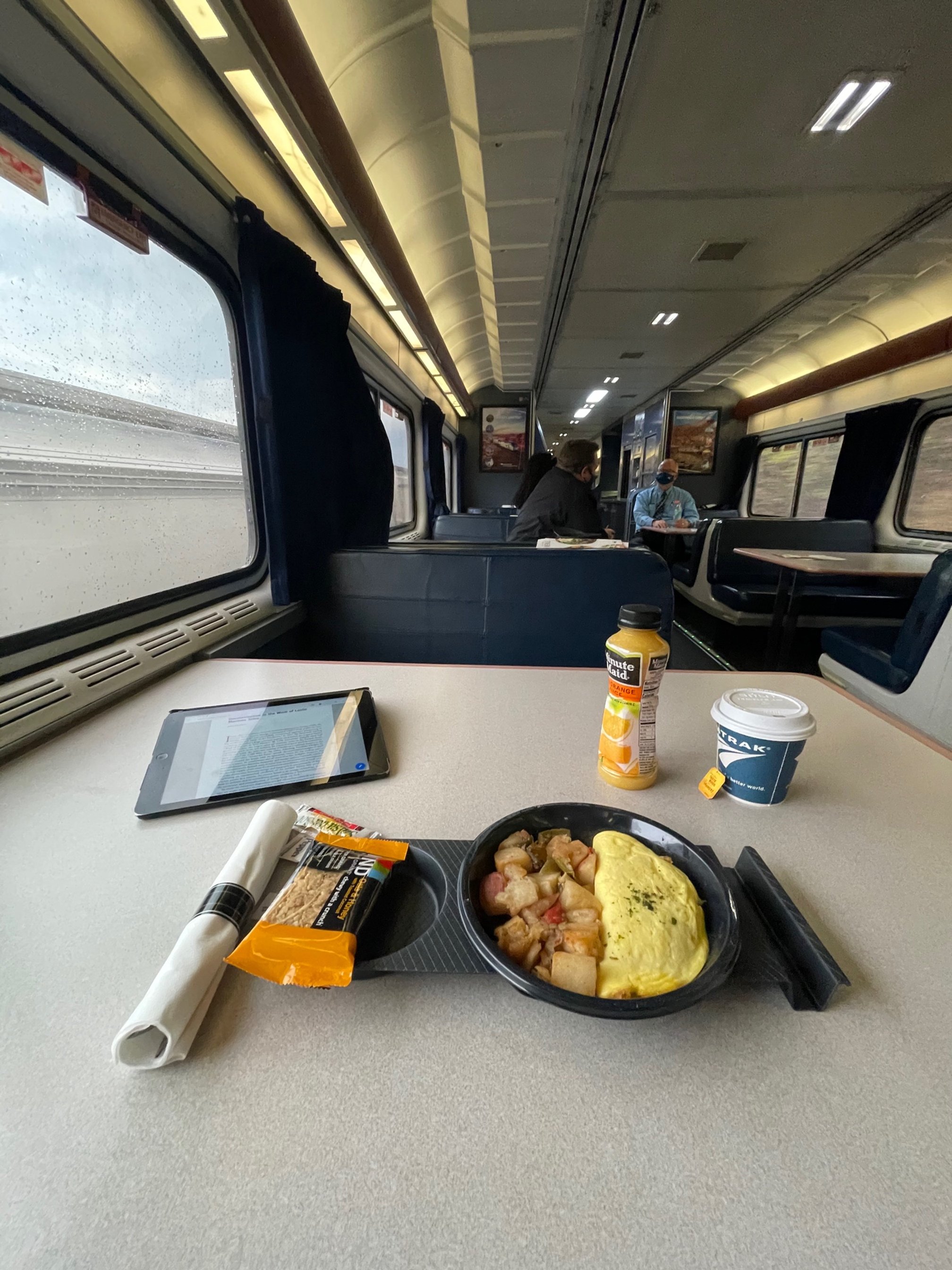The Empire Builder, from Portland to Chicago
The one-time flagship of the Great Northern Railway makes the journey from Seattle or Portland to Chicago in 45 hours, running more than 2,200 miles across the far northern United States. I made a portion of this trip in 2001, and completed the entire length of it in 2021, with a two-night stop in Havre, Montana. The stretches along the Columbia River Gorge and through Glacier National Park are, in my opinion, among the most scenic in the Amtrak network. This is my account of my 2021 journey …
An hour after stepping off the Coast Starlight from San Jose, I lined up at Portland’s Union Station to board the Empire Builder, just as I had done nearly 20 years ago. This time, I would be taking a roomette, having been spoiled by one on the very last leg of my Sunset Limited trip the previous week.
After crossing the Willamette and Columbia Rivers into Washington and leaving our first stop of Vancouver, Washington, I made my way to the shower to refresh myself after 36 hours of train travel. And in case you wondered what a shower on Amtrak looks like:
When I returned to my roomette, my attendant was taking dinner orders. Because the dining car is on the portion of the train originating in Seattle — which would join us in the middle of the night in Spokane — dinner would come in a box.
We had the choice of grilled chicken or shrimp — I chose shrimp — over salad, with a roll, some orange wedges and two soft cookies. It was refreshing to have some healthy food on the train, and I had a Kolsch in my bag to enjoy with it.
The first several hours of this ride run along the north side of the Columbia River. The Columbia River Gorge, a dramatic canyon through which the Columbia River flows, is the largest National Scenic Area in the United States, carved by lava flows and glaciers. The river is roughly a mile wide, and the area is home to 70 waterfalls.
I do not remember the scenery being this spectacular 20 years ago, and I think it may have been a cloudy day. Also, as my mom pointed out to me, we do appreciate things more as we age.
This evening, I had no shortage of appreciation as the sun shone brightly on the river, telling me this was going to be a beautiful sunset.
It was difficult for me to believe I was actually here again.
I couldn’t help but take photo after photo, video after video, from my roomette, from the back of the train and from the sightseeing car.
My only disappointment on this ride was seeing a handful of dams along the river and wondering what effect their construction may have had on local fish, wildlife and the indigenous people who have lived here for thousands of years. I guess it is better than burning coal.
Three hours into the trip, the lush greenery turned to a dry, brown landscape. I again moved to the sightseeing car for more panoramic views and was rewarded with the river and windmills to the southeast, and glowing clouds on the northwest side of the train. As we passed a truck along the highway, I downloaded a speedometer app to see that we were going about 71 miles per hour.
My attendant made my room into a bed before our 9 pm stop at Pasco. I thought perhaps I would fall asleep before Spokane, but sleep did not come over me.
At Spokane, I took a short walk outside the station toward a bar that was supposed to be open until 2 am — but it was just closing.
I hurried the few blocks back to the Amtrak station, bought a bag of chips from the vending machine, and continued back to the platform.
A fellow passenger said, “You must be from around here.”
No, I told him. I just studied Google maps and thought I had found a bar that would be open. It probably wasn’t smart of me to be on the streets at this hour.
“No,” he said, “I mean that you’re wearing shorts. It’s freezing out.”
I found the cold air refreshing, but soon it was time to climb back aboard.
Back in my room, I took my half dose of Nyquil and waited for sleep to come. I think I remember us pulling away from Spokane.
I awoke around 7 am, somewhere between Libby and Whitefish, Montana, having lost an hour as we moved from Pacific to Mountain time. The tracks must have been deep in a narrow gorge, because even though my roomette was on the upper level of the train, the rocky terrain loomed high above my window.
I took my breakfast in the dining car — veggie omelet and potatoes, a side of Chobani yogurt, a bottle of orange juice and a cup of coffee, all included in the price of the roomette.
To save some Amtrak Reward points, I shifted from my roomette to coach at Essex, so, after breakfast, I packed up my stuff and moved forward to the observation car, where I was treated to the majesty that is Glacier National Park.
The Empire Builder snakes slowly through the park at an elevation of more than 5,000 feet among dense conifer and birch forests.
Twenty years ago, I remember thinking, this is NOT what I pictured Montana to look like.
It was anything but Big Sky Country.
This time, the majesty of the park was expected — and just as awe inspiring as it was 20 years ago. The waters of the Middle Fork Flathead River beside us and numerous smaller streams we passed were emerald green.
When planning the trip, I was tempted to make a stopover in the park, but I had read that nothing is open in April and even early May.
Late May and June are considered “early” spring season, and July and August are peak. Indeed, I have a photo of myself 20 years ago standing on the Continental Divide with snow falling around me, on June 22.
This time, I would have to see the park only from the train.
After East Glacier, my stop 20 years ago but not a stop during the colder months, the Empire Builder enters what I had imagined Montana to look like — plains and low rolling hills, mostly beige with a few patches of green.
We were able to step off for 15 minutes in Shelby. There I saw the Oil City Saloon, pawn shops, Hong Kong Chinese restaurant and not much else.
The route here, known as the High Line, runs parallel to Route 2, and the train moves at a good 80 mph clip.
The next stop would be Havre, my destination for two nights. As I stepped off the train, a light snow began to fall, not exactly what I was expecting. But I should not have been surprised, given my snowfall experience in June 20 years ago.
My 48 hours in Havre included a visit to the grave of my great great grandfather, who was killed here while working on the railroad in 1917. You can read that account here.
Sunday morning, my trip to Chicago aboard the Empire Builder continued. The landscape of eastern Montana was flat and depressing, even more so under hazy skies.
About an hour into the ride, the Empire Builder travels through Harlem, the town in which my grandmother and her brothers grew up during the Great Depression. I had visited the town the previous day, and now I was being treated — if you can call it that, as it has seen better days — to a view from the train.
At Wolf Point, I splurged again and moved from an empty coach car to a roomette.
Just before 8 pm, the Empire Builder crossed into North Dakota, a state I had previously never set foot in. The landscape continued to be bleak and beige, interrupted only by a small handful of lakes, trees and, increasingly in North Dakota, oil wells.
I spent some time reading and watching a short documentary about the shale oil boom here during the Great Recession. The oil wells and high oil prices drew people from all over the country, including many immigrants, looking for steady, well-paying work. Many of these workers used the Empire Builder to return to their homes when they had a stretch of days off. By 2016, the boom had ended, but it was an interesting chapter in history to read about as the train passed through these otherwise barren lands.
For dinner, I had braised beef with polenta and a salad — another microwaved meal in a mostly empty dining car. Our 9:30 pm stop in Minot offered an opportunity to step off the train for a bit, as did our stop the next morning in St. Paul.
Monday morning’s ride ran along the Mississippi River for several miles. More than two weeks prior, at the beginning of the trip, I crossed the Mississippi in New Orleans. Today, I was crossing a much narrower river that marked the border between Minnesota and Wisconsin.
At 4:30 pm, The Empire Builder pulled into Chicago.
For me, it marked the end of nearly three weeks on the road, and 5,019 miles aboard Amtrak — and more than 9,000 miles total during the pandemic.
I would spend the evening and the following day with my family, sharing stories with them about my visit to Montana — and grateful for the opportunity to have seen so much of the country by train, safely, at a time when so much of the country had come to a standstill.
If you enjoyed this piece, check out the previous legs of this 5,000-mile pandemic journey:
Of all the transcontinental Amtrak routes, the Sunset Limited had always interested me the least. It does not offer the mountain grandeur of more northerly routes, but I have found since my very first long-distance train trip that I am fully content gazing at the passing landscape, even if it is monotonous. Louisiana, Texas, Texas and more Texas, followed by the desert of the American Southwest would offer its own beauty, and I would watch all 1,995 miles of it over the course of 45 hours. Read more.
While it was still dark, I mistook a few mountains for Mount Shasta. But once I saw the real thing, there was no mistaking it: a majestic, snow-capped peak, with a volcanic cone beside it. Soon the sky was on fire with the sunrise, illuminating the miles and miles of pine forests around us. This sunrise over the area around Route 97 is the reason I booked this leg of the trip. Read more.

